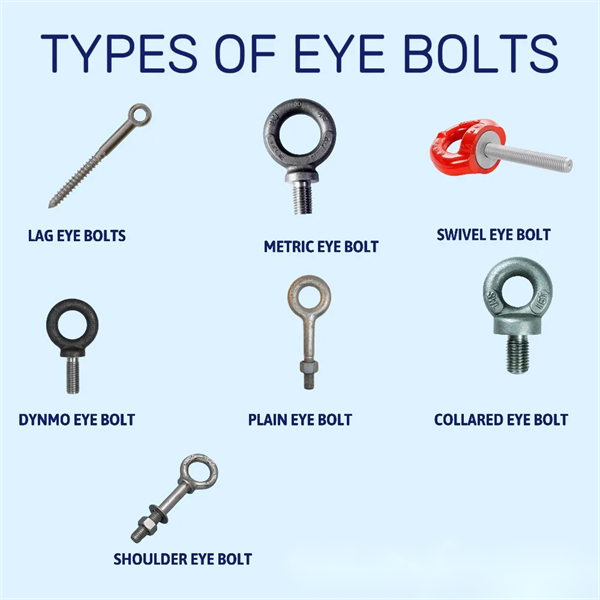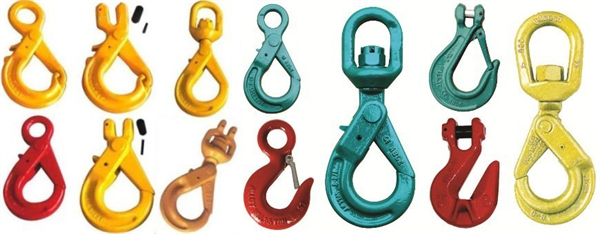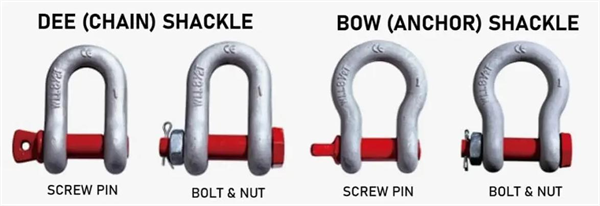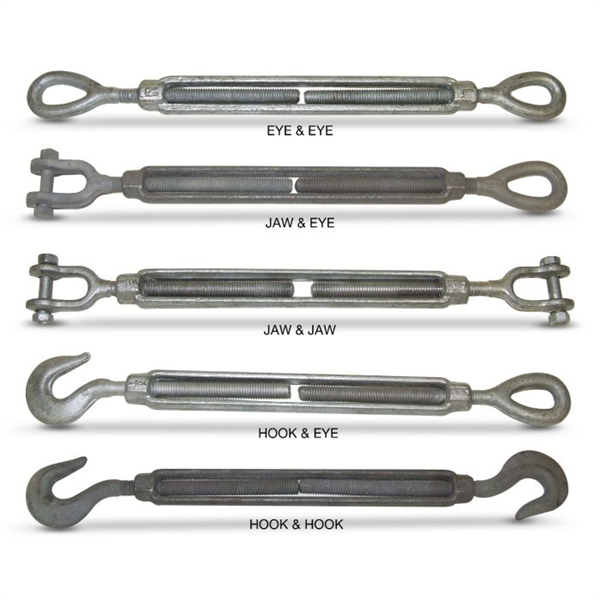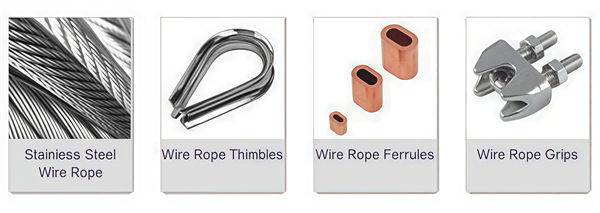Rigging
Rigging is the equipment used to lift, suspend, support, tow, or tie down a load or the use of that equipment to do the same. It includes chains, wire ropes, slings, and the equipment used to connect these to a load, vehicle, supporting structure, or lifting machine such as a crane or hoist.
Rigging Hardware
Rigging hardware refers to the mechanical components used to lift, secure, or move loads safely. There are many types of rigging hardware, each serving specific purposes in lifting and load handling operations. Here’s a breakdown of the most common kinds:
1.Eye Bolt
An eye bolt is a bolt with a loop on one end. Riggers use eye bolts to connect a load to a rigging assembly or to provide a tie‑down point. They are also used wherever there is a need to securely attach a chain or rope to an object or the ground.
There are two main types of eye bolts: machine eye bolts and nut eye bolts. Machine eye bolts are screwed directly into a threaded hole on a machine or other load. Nut eye bolts are inserted through an unthreaded hole and secured with a nut.
In lifting scenarios, the eye bolt is secured to the load, and a shackle is fixed to the bolt’s eye. Riggers can then attach other rigging equipment, such as hooks, to the shackle.
2.Rigging Hooks
Rigging hooks are heavy‑duty metal hooks. Several types of hooks are used in rigging, including slip hooks and grab hooks. They are used in many different rigging scenarios, often to collect slings to shackles or to suspend rigging assemblies from cranes. Other uses for rigging hooks include towing, lashing, logging, and hauling.
3.Shackle
A lifting shackle is comprised of a metal U‑shaped crown or bow with a pin penetrating the two free ends, which are called lugs. The pin may be secured to the shackle with a cotter pin, a nut, or some other fastening mechanism. Shackles are used to connect two parts of a rigging assembly. For example, they are often used to connect hooks to eye bolts.
Riggers use several types of shackles, which are named for the shape of the crown. For example, bow or anchor shackles have wider O‑shaped crowns, while D‑shackles, which are also called chain shackles, have narrow crowns. A clevis shackle or clevis hitch is a shackle with a narrow U‑shaped jaw and a clevis pin secured by a cotter pin.
4.Turnbuckle
Turnbuckles reduce slack or adjust tension in rigging assemblies. They have a body with tapped holes into which turnbuckle ends with threaded shafts are screwed. One end has a right‑handed thread, and the other a left‑handed thread. When the turnbuckle body is rotated, the length of the turnbuckle assembly increases or decreases. The ends are available in many different designs — including eye, jaw, hook, and stub ends — so they can be connected to various rigging equipment.
5.Wire Rope Hardware
Wire rope hardware — including wire rope clips, sleeves, and thimbles — is used to join lengths of wire rope together or to make loops which allow the rope to be attached to other rigging equipment. Wire rope slings are often constructed by forming eyes at both ends with wire rope clips or sleeves and a thimble.
Conclusion:
The above is a brief introduction to the five common types of rigging hardware. If you want to know more about the details of rigging hardware products, you can contact us here at Qingdao Well Done Imp & Exp Co., Ltd.. Here we can provide you with high-quality and competitively priced products. Our experts will be more than happy to help you find what you need.
Post time: Jun-12-2025





